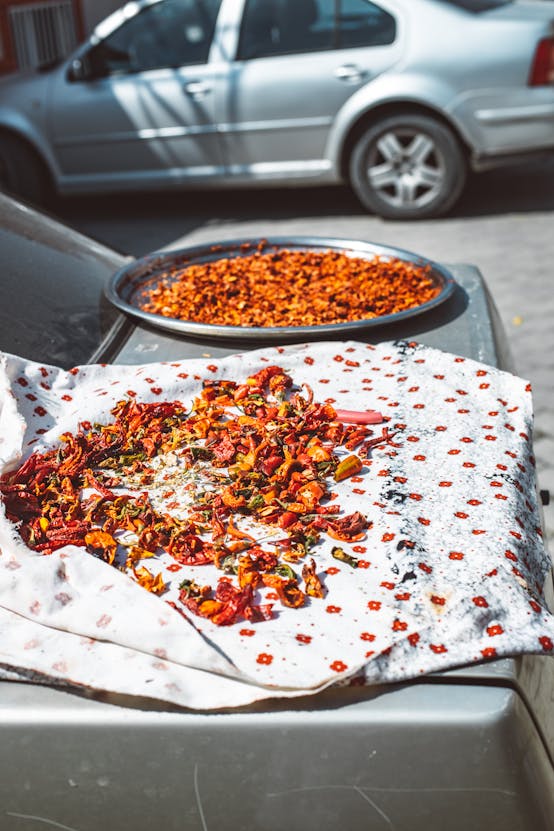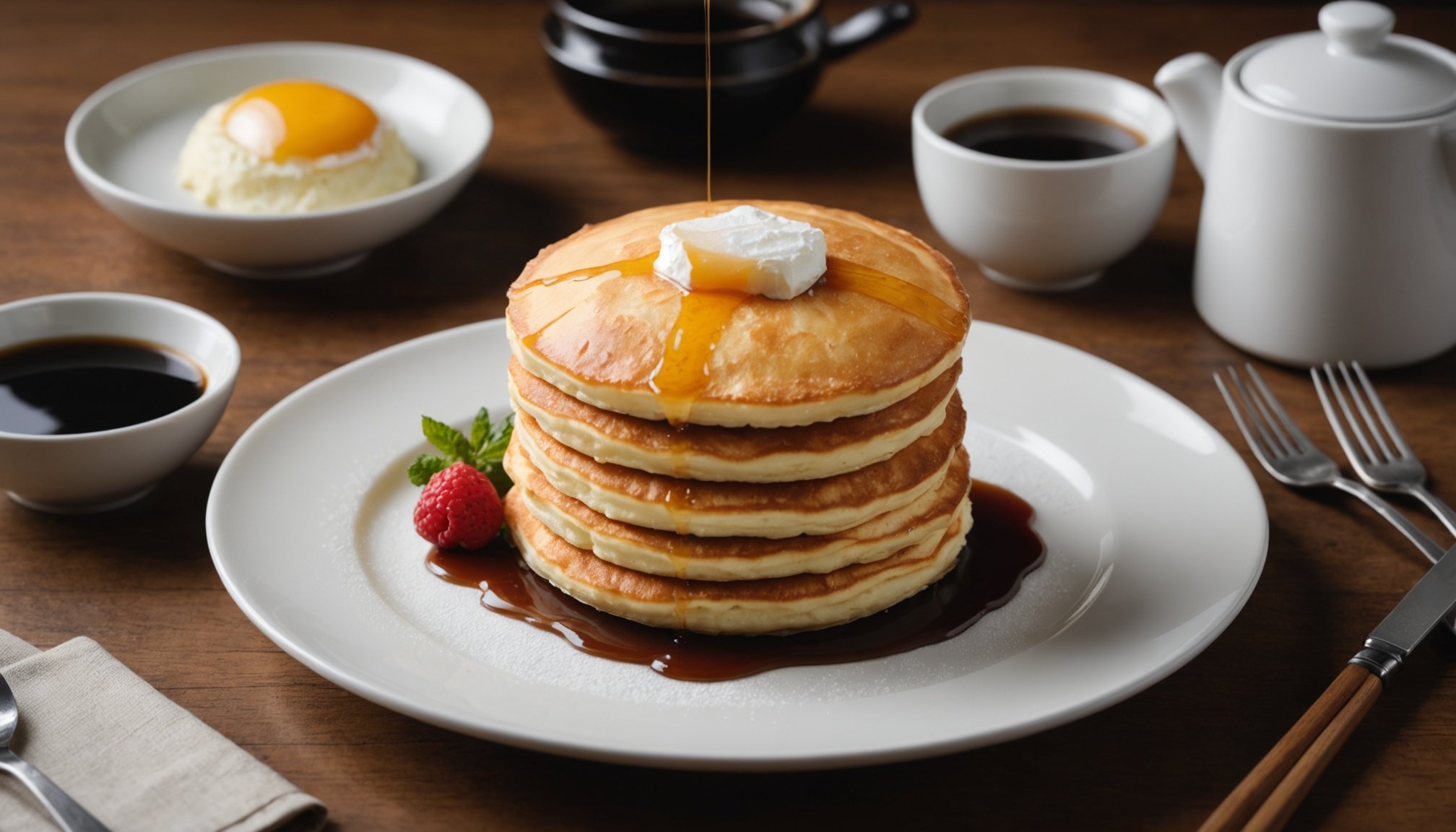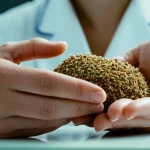Understanding Japanese Soufflé Pancakes
Japanese soufflé pancakes have captured culinary enthusiasts with their unique charm. Emerging from Japan, these exceptionally fluffy pancakes quickly became a cultural sensation globally. Unlike traditional pancakes that are dense and flat, Japanese soufflé pancakes boast a distinctively airy and light texture, attributable to the meticulous beating of egg whites into soft peaks before folding them into the batter. This technique is critical to achieving the soufflé-like rise and softness that characterize these delightful treats.
Origins and Cultural Significance
Rooted in Japanese culture, these pancakes have evolved from café specialties into emblematic street food representing culinary artistry. The emphasis on aesthetics and texture mirrors the traditional Japanese culinary philosophy of simplicity and precision. As these delicacies transitioned to international markets, they have brought along the essence of Japan’s innovative food scene.
Also to discover : Elevate your burger game: indulge in a gourmet bison burger with irresistible blueberry bbq sauce!
Comparison to Traditional Pancakes
Traditional pancakes often rely on a mix of flour, eggs, and milk, rendering them denser and more filling. In contrast, the light texture of Japanese soufflé pancakes makes them uniquely ethereal. Variants of pancakes in different cultures offer their twists, but few mimic the cloud-like appeal of the fluffy pancakes signature to Japan. Whether for their novelty or captivating texture, these pancakes stand as a testament to Japanese culinary creativity.
Key Ingredients for Fluffy Japanese Soufflé Pancakes
To make iconic Japanese soufflé pancakes, start by selecting high-quality eggs, which are fundamental for the desired fluffy texture. The separation of eggs into whites and yolks is crucial. Yolks integrate with the batter, while egg whites are whipped into stiff peaks. This technique creates air pockets, ensuring the pancake is light and airy.
Also read : Elevate your burger game: indulge in a gourmet bison burger with irresistible blueberry bbq sauce!
The role of milk and flour is equally significant. Milk adds moisture, while flour provides structure, coming together to create a smooth, consistent batter. Opt for precise measurements to maintain the balance. Over-mixing, however, can deflate the egg whites, jeopardising fluffiness.
Additional ingredients enhance flavour and texture. Vanilla extract often adds a fragrant aroma, while sugar sweetens the mix without overpowering. Baking powder, although not always used, assists in leavening during the cooking process.
Other optional additions include lemon zest for a tangy twist or a pinch of salt to balance sweetness. Ingredient choice is pivotal in crafting authentic Japanese soufflé pancakes, so prioritizing freshness and quality will refine your skillet skills, bringing you closer to pancake perfection.
Step-by-Step Recipe for Japanese Soufflé Pancakes
Creating Japanese soufflé pancakes requires precision and a gentle touch. These delicate treats are thicker and fluffier than regular pancakes, thanks to their unique method of preparation and the right cooking techniques.
Preparing the Batter
To start your pancake recipe, the batter is key. Follow a two-stage mixing process to ensure optimal texture. Begin by separating eggs and whipping the egg whites until stiff peaks form. Carefully fold the egg whites into the egg yolk mixture, consisting of sugar, flour, and milk. This step-by-step guide is essential to maintain the airiness of the batter.
Cooking Techniques
Utilizing the right equipment is critical. Use a non-stick pan and measure ingredients precisely to achieve consistent results. Cook pancakes on low heat with a lid to trap steam, allowing them to rise evenly for a soufflé-like texture. Patience is key when mastering these cooking techniques.
Plating and Serving Recommendations
Once cooked, presentation adds to the experience. Consider creative serving ideas to elevate your pancakes. Dust with powdered sugar, add fresh fruits, or drizzle with maple syrup. These finishing touches enhance both the visual appeal and the flavour. Your step-by-step guide with detailed cooking techniques will ensure an impressive breakfast treat.
Tips for Achieving Maximum Fluffiness
Achieving the desired fluffiness in your pancakes requires attention to detail and employing the right techniques. Among the most critical fluffiness tips is the separation of eggs and the whipping of egg whites. This step introduces air, making your pancakes lighter and taller. Ensure that no yolk is present when whipping the whites to achieve stiff peaks, as even a small amount of fat can prevent the whites from reaching their full potential.
When it comes to cooking methods, maintaining an optimal cooking temperature is crucial. For souffle pancakes, moderate heat is best. If the heat is too high, the outside may brown before the inside fully cooks, compromising the height and texture you’ve strived for.
To retain as much airiness as possible, practice gentle folding techniques. After preparing your batter, gently fold in the whipped egg whites in a smooth, sweeping motion. This action helps maintain the air bubbles that contribute to the pancake height and fluffiness. Avoid overmixing, as this can deflate the batter, leading to dense pancakes. Emphasize patience and delicacy at each step, and you’ll be rewarded with perfectly fluffy pancakes to enjoy.
Troubleshooting Common Issues
Encountering texture issues in your pancakes can dampen breakfast spirit. If your pancakes are turning out dense, it might be due to overmixing the batter. Overmixing develops gluten, which affects the fluffiness. Solve this by gently folding the wet and dry ingredients until just combined. Another culprit for density is using outdated baking powder. Always check the expiration date to ensure maximum leavening power.
Cooking problems such as sticking can also be troublesome. A non-stick skillet or generous greasing can prevent this issue. Make sure the cooking surface is adequately heated before pouring the batter. If your pancakes stick initially, let them cook a bit longer before flipping.
Another consideration is elevation changes. At higher altitudes, pancakes might require adjustments in ingredients and methods. You might need to use less leavening agents and increase liquid content. Reducing sugar slightly can also aid in adjusting to elevation.
Lastly, a simple pancake troubleshooting trick is adjusting the batter’s thickness. If your pancakes spread too much, the batter might be too thin; a little more flour can fix this. For better results, aim for a consistency that resembles thick cream.
By addressing these common issues with practical solutions, you’re one step closer to enjoying perfectly fluffy and non-sticky pancakes.
Variations of Japanese Soufflé Pancakes
Elevate your breakfast with the delicious art of Japanese soufflé pancakes by experimenting with delightful pancake variations. These uniquely fluffy treats serve as a scrumptious canvas for innovation in flavor.
To add personality to every bite, consider infusing your batter with flavored pancakes variants such as matcha or chocolate, bringing an exciting yet subtle twist to the traditional taste. Matcha lends earthy notes and vibrant colors, while chocolate offers a richer, more indulgent flavor.
Get playful by incorporating fruits or nuts into your pancakes, blending texture and taste. Fresh berries or sliced bananas make for a refreshing start, whereas nuts like almonds or walnuts introduce a delightful crunch.
Moreover, adapting the recipe for dietary needs — such as gluten-free or vegan — ensures everyone can join the soufflé celebration. Utilizing alternative flours, like almond or coconut flour, keeps things light while aligning with gluten-free requirements.
For vegan-friendly options, experiment with plant-based milk such as almond or oat, and explore innovative egg replacements like applesauce or flaxseed. Each adjustment keeps the essence of the pancake intact while offering creative additions catering to specific diets.
These variations open a world of possibilities to savor your Japanese soufflé pancakes in ways you will not soon forget!
Visual and Video Resources
Digital platforms have transformed how we master cooking techniques like making pancakes. Cooking videos, such as those found on popular video streaming sites, allow learners to visually engage with the process, understanding nuances impossible to convey in text alone. This benefit is significant because many cooking techniques rely heavily on sight, such as judging the right batter consistency or the ideal pancake flip timing.
For those eager to experiment or improve their cooking skills, pancake tutorials hosted on leading channels serve as excellent learning tools. Websites and platforms hosting a plethora of visual guides cater to both beginners and experienced chefs alike. Channels like Tasty, BBC Good Food, or Chef John’s integrate professional guidance with a touch of creativity to ensure viewers get the best of both worlds.
Moreover, user-generated content adds a layer of relatability and diversity. Everyday cooks share their unique twists on pancake recipes, offering variations that might not be covered by professional chefs. This democratization of cooking guidance means that learners have access to a broader spectrum of styles and tips, opening up a world filled with inspiration. Engaging with this content helps individuals find not only precise instructions but also creative takes that spark innovation in their kitchens.











